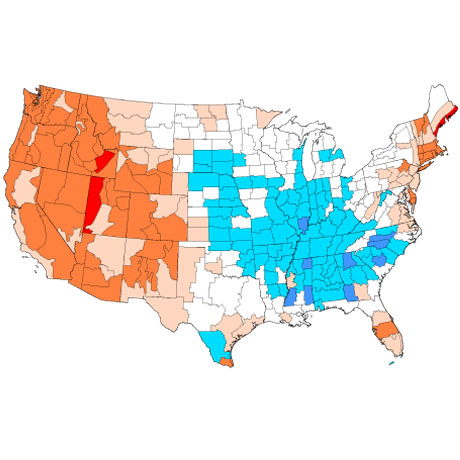NASA to share data through Amazon cloud

The space agency is providing terabytes worth of climate and Earth science data to researchers, app developers, academia and the public.

NASA is making terabytes worth of climate and Earth science data available through an Amazon cloud system. (Image from the National Oceanic and Atmospheric Administration's 2013 Climate Report)
NASA is making use of Amazon Web Services-powered cloud to make terabytes worth of climate and Earth science data available to researchers, app developers, academia and the public.
The first collection of NASA satellite and global change datasets were made available through the cloud Nov. 12, including temperature, precipitation and climate change projections, as well as data processing tools developed by NASA Earth Exchange (NEX), a research platform of the NASA Advanced Supercomputing Facility at Ames Research Center in California. (See the datasets now available.)
The move helps NASA comply with the Obama administration's Open Data Executive Order, which called on federal agencies to make government information open and machine readable.
"NASA continues to support and provide open public access to research data, and this collaboration is entirely consistent with that objective," said NASA Chief Scientist Ellen Stofan. "Earth science research is important to every person on the planet, and we welcome contributions from all researchers in improving our understanding of Earth and its climate."
NASA's cloud use reduces logistical difficulties such as download bandwidth, storage and on-premise processing power it faced making the large datasets available before.
The first datasets now available in Amazon S3 comprise more than 20 terabytes of climate assessment, global land survey and vegetation modeling, with more soon to be available.
Users can peruse the datasets with a few mouse clicks. With data available through NEX, users can run or share modeling algorithms, create projects and share results with a broad scientific community.
"By bringing these NASA public data assets into the AWS cloud, we help NASA engage a larger community for global change impact modeling and analysis as well as data sciences innovation in general," said Jamie Kinney, AWS senior manager for scientific computing. "Together, NASA and AWS are delivering faster time to science and taking the complexity out of accessing this important climate data."
NEXT STORY: Federal Telework Use and Satisfaction Are Rising



